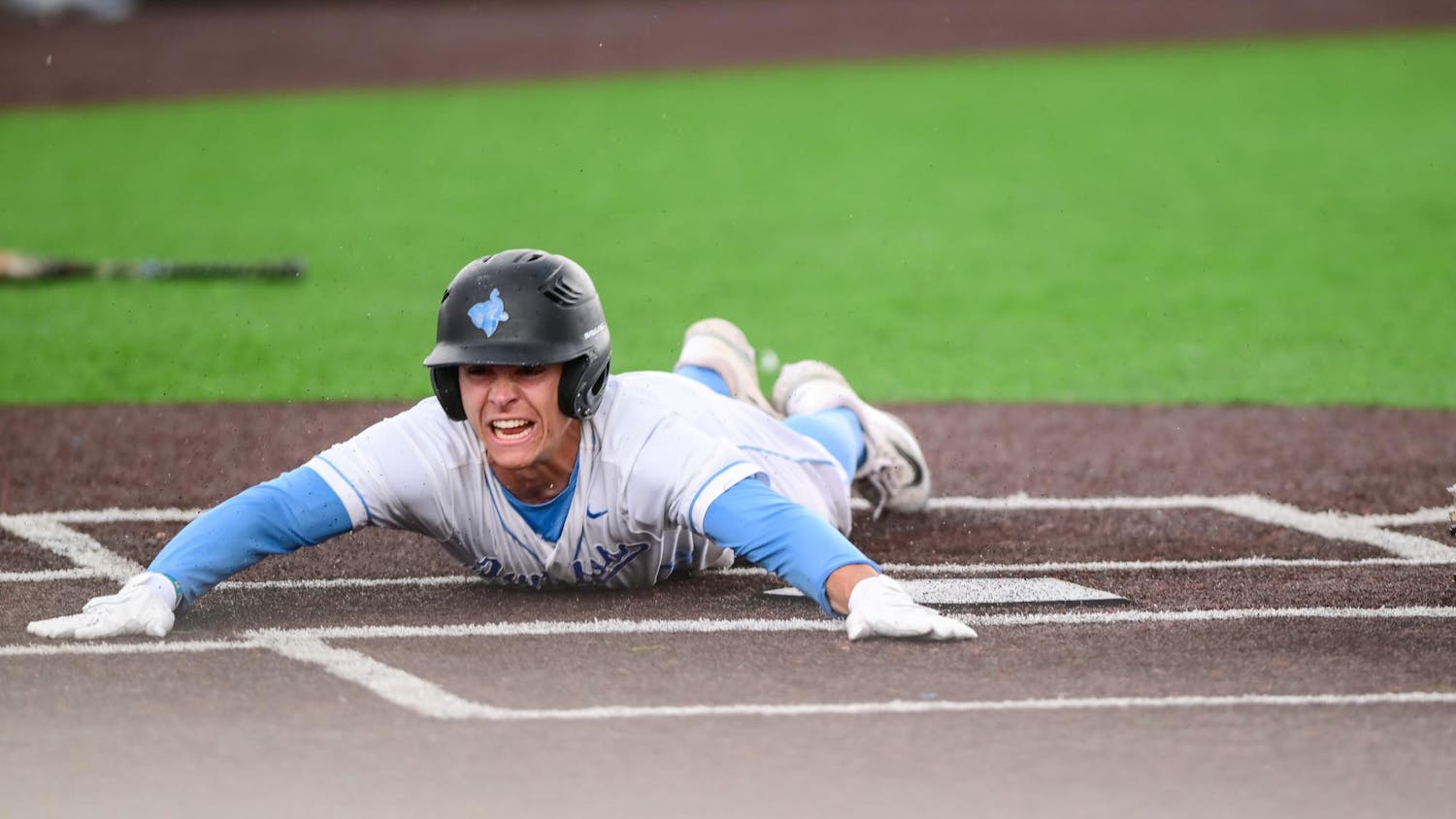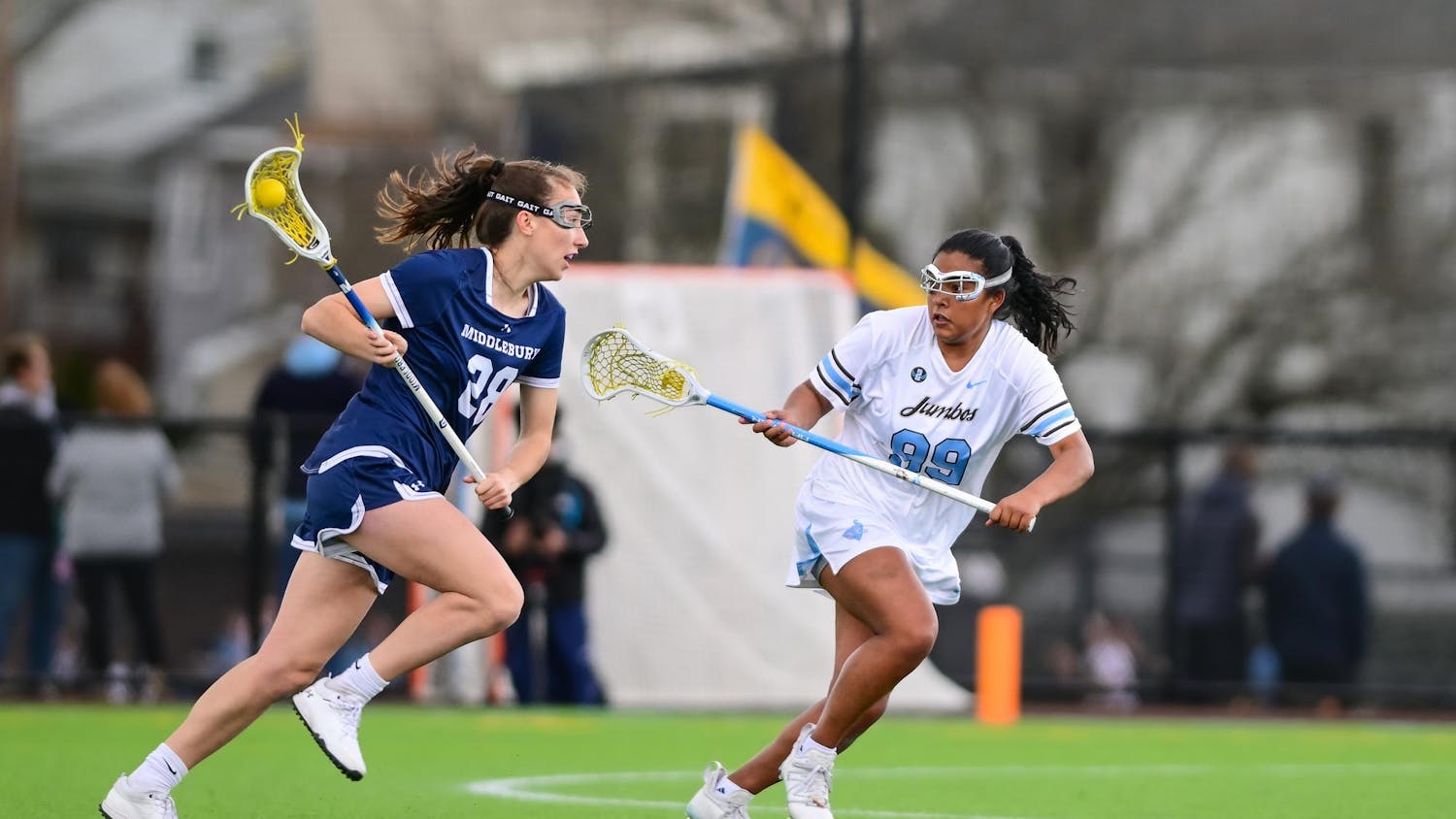When it comes to Div. III athletes, few compare to Tufts alumna Julia Browne (LA '11). Through long hours of practice and training, this Jumbo made it all the way to the professional circuit.
Browne first began playing tennis in Glenn Head, N. Y., where she was raised. Her father, who was a professional tennis player himself after playing at the University of Wisconsin, was her first coach. Browne's father not only exposed her to tennis, but also to a variety of other sports as well, including soccer, basketball and softball.
In high school, Browne's father told her that, while she could continue playing as many sports as she wanted, she would have to narrow her focus to progress significantly in one of them. Browne says that she struggled when choosing which sport to pursue. She found it so difficult to narrow it down to just one that she decided to play basketball in the winter and tennis in the spring.
As Browne got older and more serious about tennis she started competing in the junior circuit, playing in USTA junior tournaments starting in the 14-and-under circuit, but she admits that she didn't enjoy her experiences.
"I played mostly sectional tournaments and a few national opens as I got to the 18-and-under [circuit]. The Eastern section was very strong, competitive and not a friendly environment," Browne said. "In every tournament there was at least one match where a girl was blatantly cheating, and I was too scared to call a linesman. Girls were also mean in that they'd be friends with you off court right after they cheated in a match."
While playing in the junior circuit, Browne found it hard to obtain the results she was aiming for.
"I was losing a lot, and I was constantly upset that I wasn't getting the results I wanted, but was told, mostly by my dad, that I hadn't peaked yet and that I was still getting better," Browne said. "I did not want to hear this at the time, but he was right."
After four years of being a two-sport high school athlete, Browne had to choose whether or not she was going to pursue tennis or basketball in college. A stronger focus on fair play and a chance to finally peak and see the results she expected were some of the reasons that made Browne choose tennis.
Following her decision, Browne found the recruitment process trying.
"The college recruiting scene was difficult because very few coaches were interested based on my junior results," Browne said. "I was mediocre at best. However, I feel so grateful that I met with [coach] Kate Bayard and ended up at Tufts."
Browne came to Tufts unsure of how well she would do, but was ready to work hard to reach her full potential. After a lackluster freshmen year, Browne's game started to click. At the end of an incredible sophomore year season, she began to think about playing professionally.
"I didn't decide until my sophomore year that I would seriously consider playing pro after school because it wasn't realistic until then," Browne said. "After my sophomore year, I felt like I had improved a lot and then I played a couple pro tournaments over the summer. Junior and senior year I played some of my best collegiate tennis, so the goal to play professionally seemed realistic to me."
One NCAA Div. III singles title, three NESCAC Player of the Year awards, one Div. III Doubles Championship, and a slew of leadership, sportsmanship, and athlete awards later, Browne decided to play professionally.
"I knew I wasn't going to make a living off being a professional tennis player and that I had other goals that I wanted to pursue for my career ... at the same time, I wanted to take tennis as far as it could go," Browne said.
Browne played in singles and doubles tournaments all over the world, including in places like South Africa, Turkey, and Greece. She believes that, even though it might be tougher for them, Div. III athletes have a place in the professional tennis.
"The top Div. I players are equivalent to about [the top] 150-300 [players] in the world," Browne said. "While these players would most likely have more success than the top Div. III players on the pro tour, that doesn't mean that Div. III players can't compete and have a ranking."
She says that most people seem to think that professional tennis includes only top players like Serena Williams and Maria Sharapova, but that in reality there's a wide range of players from the very top all the way down.
For current Tufts tennis players, Browne has left a lasting legacy, and has shown them that being a professional tennis player is not synonymous with going to a Div. I school.
"She's obviously the best women's tennis player Tufts has ever had," sophomore tennis player Catherine Worely said. "I remember last year as a freshman we had our first tournament and I was the only freshman sitting by myself watching some of the other girls play and she came up and sat next to me and I was basically star struck. Her name is mentioned all the time. Everyone knows who she is."
Browne confesses that after an accomplished high school, college and professional career, she's giving tennis a break and trying different sports.
"Right now I'm playing squash," Browne said. "I needed to have a clean break from [tennis]. It's good because of tennis, I don't have to start the sport from scratch. I am not sure exactly what my career aspirations are as of now, but I hope to figure it out in the next five to six years."






